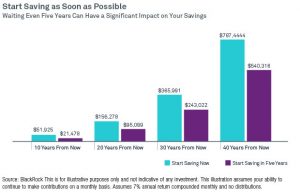
Estimating the Cost of Your Retirement
One of the major concerns of those who are considering retirement is how to maintain a similar lifestyle to the one they currently enjoy once they put away their working shoes for good. Various financial experts cite this figure at anything between 60 and 85% of your current gross household income. What’s more, you’re more likely to be the nearer the lower end of this scale, the higher your current income. The truth of the matter is, individual circumstances are all different, so here are some concrete tips as to how to work out your own magic number that will see you living comfortably, without having to conjure up funds from elsewhere.

Factors to Consider
Just as you may do now in your working life, you can sit down and budget for your retirement by going through predicted income and expenditure for the golden years ahead. Of course, there is the small matter of how many years you (will hopefully) need it for, and at least some unexpected costs along the way – that’s life.
Here are some of the basic figures you should look at roughly calculating:
- Put a price on the annual income you think you will need in today’s dollars
- Choose a realistic proposed retirement date
- Calculate your average lifetime inflation rate
- Accurately forecast the rate of return expected on investments, before and after retirement
- Calculate the current market value of investments, IRAs, tax-deferred savings plans and the like
- Get an estimate of annual and lump-sum pension income from your provider
- Calculate any future Social Security benefits due
Omit the following (unless you plan to continuing work full- or part-time for a period):
- Salary after retirement
- FICA payments
Once you have put together as good an estimate as possible, you can put an amount on the annual figure necessary for you to live to the means you have become accustomed to. A few formulas added to the most basic spreadsheet will allow you to adjust figures and see the results for worst and best case scenarios or unseen costs, as well as to adjust retirement dates, inflation forecasts, and income.
The only other consideration is to decide whether you wish to maintain, reduce or (perhaps) raise your existing expenditure in retirement.

Making the calculation a little easier
The above list is quite extensive. So allow us to simplify it somewhat by removing inflation, all returns from investments, Social Security, and pension income. Write down the value of your retirement savings as it stands, the annual income you envisage needing, your retirement date, and anticipate living 20 years after that date passes.
A quick example:
Current retirement savings amount: $50,000
Annual income desired: $25,000
Retirement date: 25 years’ time
Retirement duration: 20 years
Therefore, you would need $25,000 for 20 years, which equates to $500,000 by retirement date. With your current savings amount at 10% of that total, there is a $450,000 shortfall to save in the forthcoming 25 years. Meaning that you need to save $18,000 annually until retirement.
The key to getting an accurate figure is to be as objective and honest as possible, to err only on the negative side, and make rational forecasts and assumptions.
Additionally, there are many online calculators, such as the one found here.
Our last two cents

An essential piece of advice that you will always get from any financial advisor – and for that matter, anyone you discuss the topic with – is the sooner you start saving for and thinking about retirement, the better. Be wise now and seek out investments that will pay off – even if they consist of many small amounts – in your latter years. The more proactive you are about it, the more likely you are to have a bigger pot to delve into.










